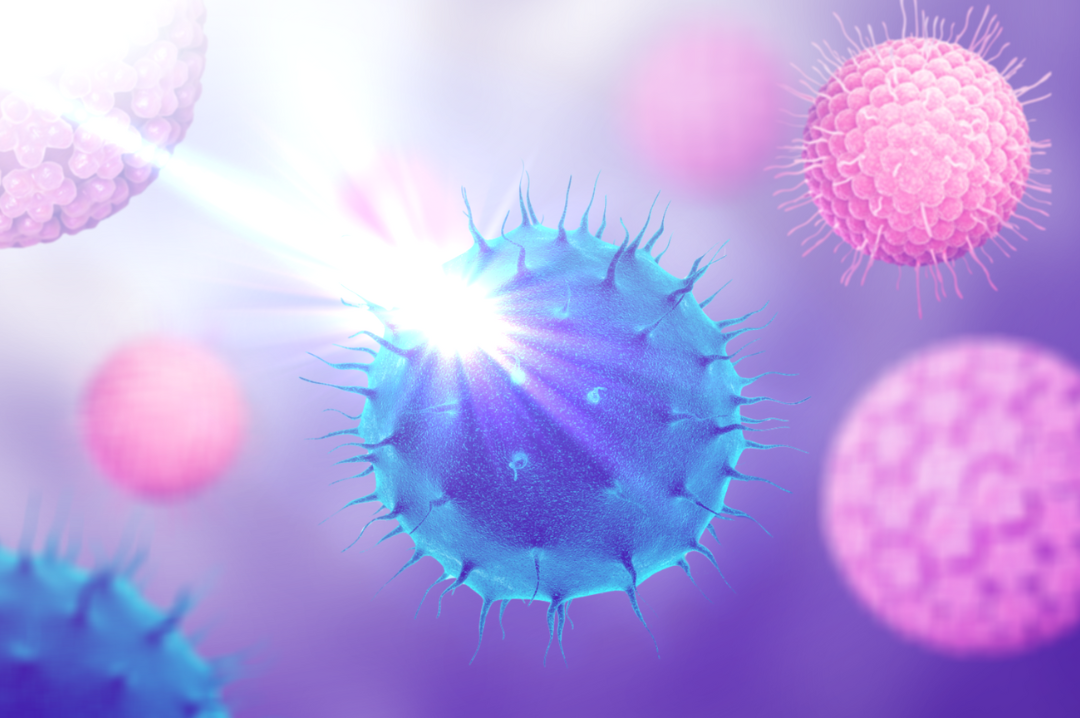Knowledge Hub

Preventing HPV Transmission During Transvaginal Ultrasounds: A Priority in Gynecology
Human papillomavirus (HPV) is one of the most common sexually transmitted infections worldwide. There are over 200 viral types1; among them, high-risk types, particularly HPV-16 and HPV-18, are involved in the development of precancerous lesions that can progress to cancers of the cervix, vulva, or vagina.2
Often asymptomatic, HPV can lead to severe consequences, especially for women’s health.
A Real Risk in Daily Medical Practice
In gynecology, transvaginal ultrasound is a routine procedure. However, using a reusable probe can become a vector for HPV transmission if disinfection protocols are not sufficiently effective.
Indeed, some pathogens can survive for up to 7 days on the surface of a probe, highlighting the importance of thorough disinfection.
Even when single-use protective sheaths are used, and probes are cleaned with disinfectant wipes, the risk does not vanish entirely. Some studies have shown that ~13 % of tested ultrasound probes remain contaminated with HPV after use, despite these measures.3
This figure is striking: it highlights the virus’s resistance to manual disinfection methods and the limitations of protective sheaths, which may suffer from microscopic perforations invisible to the naked eye.
HPV: Numbers That Speak for Themselves
- Nearly 100 % of cervical cancers are caused by HPV.4
- Cervical cancer is the fourth most common cancer in women globally with around 660 000 new cases and around 350 000 deaths in 2022.5
- Over 80 million Americans are currently infected with HPV, and 14 million new infections occur each year.6
These figures underscore the importance of implementing reliable solutions to reduce the risk of cross-contamination during gynecological exams
A Targeted Response: Chronos® (UV-C)
To address this challenge, Germitec developed Chronos®, a High-Level Disinfection (HLD) system compliant with NF EN 14885:2022, specifically designed for ultrasound probes. It is also compliant with and validated according to BS, TGA, and FDA standards.
Chronos® uses UV-C light disinfection technology, chemical-free. In just 90 seconds, it delivers a complete, reproducible, and traceable disinfection cycle suitable for demanding clinical settings.
Thanks to its automated process, Chronos® eliminates the variability of manual disinfection and enhances patient safety while streamlining clinical workflows.
Patented Technology in the Service of Infection Prevention
Chronos®’s performance is based on Yuvee®, Germitec’s patented UV-C technology. It works by destroying the DNA and RNA of microorganisms on probe surfaces, thereby blocking their ability to replicate or infect the next patient.
Unlike conventional methods, this technology does not degrade probes or compromise the integrity and lifespan of medical devices. It ensures a consistently high level of disinfection.
Proven Efficacy Against HPV
Chronos®’s efficacy against HPV is not a claim, it is scientifically validated.
- Germitec is the first company to demonstrate elimination of HPV types 16 and 18 in a disinfection cycle under real clinical condition7&8
- This validation is based on an independent study conducted by Professor Craig Meyers, a globally recognized HPV researcher.7
- The Chronos® system is now deployed in over 25 countries, including the United States.
A Crucial Advancement for Safety in Gynecology
The fight against HPV begins in routine care. It’s essential to avoid exposing patients to needless cross-contamination, especially during repeated procedures like transvaginal ultrasound.
By integrating Chronos® into their protocols, healthcare facilities choose a rapid, High-Level Disinfection solution that respects patients, staff, and medical devices.
Conclusion
During Pink October, which highlights prevention and early detection of women’s cancers, safety during gynecological exams is more important than ever.
With Chronos®, Germitec offers an innovative, scientifically validated solution to effectively reduce HPV transmission risk, an actionable advancement for women’s health.
-------
References:
1. https://www.who.int/news-room/fact-sheets/detail/human-papilloma-virus-and-cancer
2. https://www.cancer-environnement.fr/fiches/expositions-environnementales/infection-a-papillomavirus-humains-hpv/
3. Persistence of Microbial Contamination on Transvaginal Ultrasound Probes despite Low-LevelDisinfection Procedure M'Zali F, Bounizra C, Leroy S, Mekki Y, Quentin-Noury C,et al. (2014) Persistence of Microbial Contamination on Transvaginal Ultrasound Probes despite Low-Level Disinfection Procedure. PLOS ONE 9(4): e93368.https://doi.org/10.1371/journal.pone.0093368
4. https://www.cdc.gov/cancer/hpv/cases.html?utm
5. https://www.who.int/news-room/fact-sheets/detail/cervical-cancer
6. https://cervicalcancerfoundation.org/cervical-cancer-and-hpv-statistics/
7. Pichon M, et al. (2019) Decontamination of Intravaginal Probes Infected byHuman Papillomavirus (HPV Using UV-C Decontamination System. J. Clin. Med, 8, 1776;doi:10.3390/jcm8111776
8. MeyersC, et al. (2017) UVC Radiation as an Effective Disinfectant Method toInactivate Human Papillomaviruses PLoS ONE 12 (10): e0187377





